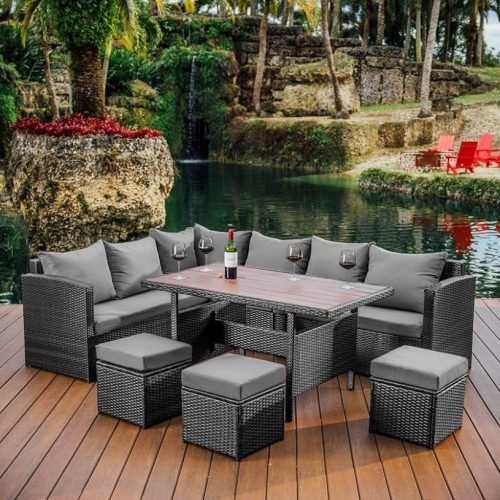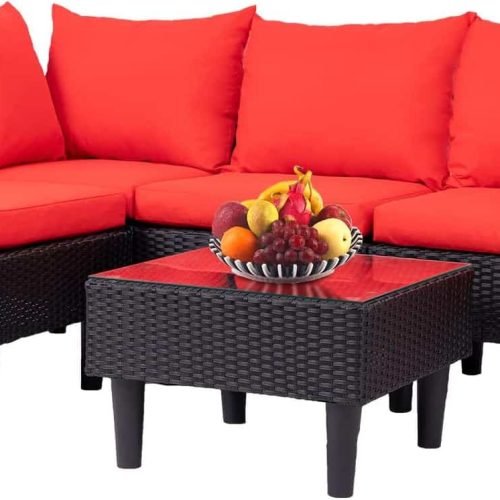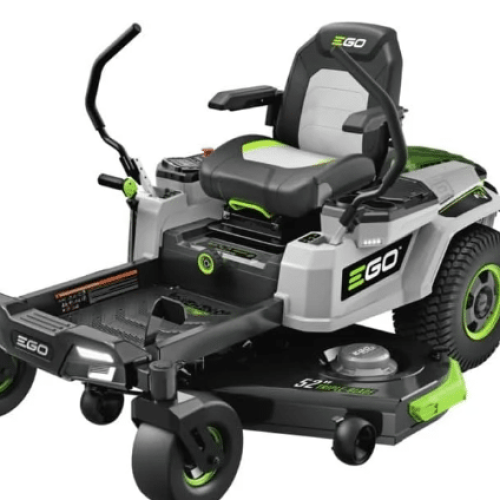Hey guys its JV Charles! Did you know you can grow blueberries in small containers on your patio or balcony? Growing blueberries in containers is a great way to enjoy this superfood, even without a big garden. With the right care, container blueberry plants can be a tasty addition to any small space.
It might take a few years for blueberry container gardening to give you a big harvest. But, the process is easy, and the rewards are worth it. This guide will cover the benefits of growing blueberries in containers. We’ll talk about picking the right varieties and potting mix, and share tips for keeping your blueberry pots healthy.

Key Takeaways
- Blueberry plants can be successfully grown in containers, even in small spaces
- Selecting the right container size and blueberry variety is crucial for optimal growth
- Achieving the ideal soil acidity is essential for healthy blueberry plants
- Proper watering, mulching, and protection from birds are key to maintaining a thriving blueberry container garden
- Patience is required, as it may take a few years for container-grown blueberries to reach full production
Introduction to Blueberry Container Gardening
Growing blueberries in containers is easy and rewarding. It’s perfect for those with little garden space or poor soil. By learning about blueberry plants, you can make a beautiful blueberry garden on your patio or balcony.
Benefits of Growing Blueberries in Containers
There are many perks to using containers for blueberries. You can place your pots in the sun and move them to a safe spot in the fall. This protects the plants from cold winds. Plus, it’s simpler to keep the soil acidic, which blueberries love, in containers.
Blueberry Plant Overview
Blueberry plants are perennials that grow in North America, South America, Europe, and Asia. They can be as tall as 4 feet. These plants are famous for their tasty berries and beautiful fall colors.
“Blueberries are traditionally grown in soils amended with pine bark and supplemental sulfur due to their preference for well-drained, acidic soils with high organic matter content.”-JV Charles
Knowing what blueberry plants need helps gardeners grow them in containers. Even in small spaces, you can have a thriving blueberry garden.

Choosing the Right Containers and Varieties
Growing blueberries in containers is a rewarding hobby. It’s important to pick the right containers and varieties for your climate and growing conditions. Let’s look at the key factors for blueberry container size, blueberry container material, and selecting blueberry varieties for container growing.
Container Size and Material Considerations
Size is crucial when growing blueberries in containers. Choose the biggest pot you can, at least 18 inches deep. This gives the roots enough room to spread out. Wooden half-barrels, large plastic or ceramic pots, and other deep, wide containers are great for blueberries.
The material of your container is also important. Blueberries need well-draining soil. So, pick a container with lots of drainage holes to avoid waterlogging. Wooden or resin pots are good choices because they’re durable and allow for good drainage.
Selecting Blueberry Varieties for Container Growing
- Highbush blueberries: Grow 3-4 feet tall and wide, ideal for larger containers.
- Lowbush blueberries: Compact plants, reaching 1-2 feet in height, suitable for smaller pots.
- Rabbiteye blueberries: Thrive in warmer climates, growing 6-8 feet tall and wide.
- Half-high blueberries: A cross between highbush and lowbush varieties, reaching 2-4 feet in height.
Blueberries need cross-pollination to produce fruit. Plant at least two different varieties close together for the best fruit production. Think about the chill hours each variety needs and pick ones that fit your climate.
“Blueberries thrive with cross-pollination, even if some varieties claim to be self-fertile. It’s recommended to plant blueberry varieties in close proximity to encourage increased production.”-JV Charles
By choosing the right blueberry container size, blueberry container material, and blueberry varieties for container growing, you can have a thriving blueberry garden. With some care and attention, your containerized blueberries will give you a great harvest for many years.

Preparing the Potting Mix
For growing blueberries in containers, the right potting mix is key. They love acidic soil with a pH of 4.5 to 4.8. Most garden soils are too alkaline, making containers a great choice for blueberry lovers.
Achieving the Ideal Soil Acidity for Blueberries
To make the best blueberry potting mix, mix one part sphagnum peat moss with one part shredded pine bark. Or, use two parts coir, two parts sphagnum peat moss, and one part perlite. Peat moss lowers soil acidity and improves texture, especially in clay soils.
If you don’t have acidic potting mix, make your own. Add a soil acidifier like Ammonium Sulfate or Elemental Sulfur to regular potting mix. Ammonium Sulfate works fast but can leach away quickly. Elemental Sulfur takes longer but works with soil bacteria to lower pH.
When using Elemental Sulfur, apply it well before planting and cover the soil with mulch or a cover crop. This prevents grass clippings and other materials from matting. Epsoma Soil Acidifier recommends 12 lbs per 100 square feet to drop the pH by one point. Always check the product’s instructions or talk to your local gardening expert for the right amount to use.
Getting the soil pH right is crucial for blueberries. By picking the right blueberry potting mix or adjusting your soil, you can give your container blueberries the best conditions to thrive.

“Blueberries require an ideal soil pH in the range of 4.5 to 5.0 for successful production.” -JV Charles
Planting and Caring for Blueberries in Containers
Planting blueberries in containers is a great way to grow these tasty berries, even with little garden space. To make sure your blueberry plants do well, follow a few important steps.
Start by putting your blueberry bushes in their containers. Make sure they’re as deep as they were in their pots. Add more soil on top, leaving the top inch empty. Then, water the pot well to settle the soil and fill any air gaps around the roots.
Blueberries need a lot of water but prefer soil that drains well. Keep the soil moist but not too wet. Don’t skip watering your plants when it rains, as the leaves can block water from reaching the roots.
Since blueberries love acidic soil, keep the pH between 4.0 and 4.8. Feed your blueberry plants with an organic fertilizer for acid-loving plants in early spring to help them grow strong.
For good pollination and fruit, grow at least two blueberry plants of different types. Choose varieties that bloom at the same time or overlap for the best pollination.
With proper planting and care, you can have a lot of fresh blueberries from your containers. Follow these tips for planting and caring for blueberries in containers. You’ll be on your way to a great blueberry harvest.
Blueberry Container Gardening Tips
Growing blueberries in containers is a great way to enjoy fresh berries with little garden space. To make sure your blueberries do well, learn about blueberry container watering and blueberry container mulching. Also, it’s important to protect blueberries from birds to get a good harvest.
Watering and Mulching Techniques
Blueberry plants need steady, even moisture to grow well. Make sure to water them when needed but don’t let the soil get too wet. Use a drip irrigation system or check the soil often and water when it’s dry up to 2 inches deep.
Adding 2-3 inches of organic mulch, like pine needles or wood chips, helps keep the soil moist and stops weeds from growing.
Protecting Blueberries from Birds
Birds can be a big problem for blueberries. To keep them safe, put bird netting around your plants a few weeks before the berries are ready. This will keep the birds away and let you enjoy your blueberries.
By learning how to blueberry container watering, blueberry container mulching, and protect blueberries from birds, you can grow great blueberries in containers. Enjoy a tasty, homegrown harvest from your own backyard or patio.
Pruning and Maintaining Blueberry Plants
Looking after your blueberry plants is more than just planting and watering them. Pruning is key to keeping them healthy and productive for a long time. Make sure to prune your blueberry bushes in late winter, just before they start growing new leaves.
Use clean, sharp pruners to cut off any dead, weak, or odd branches. You can safely remove up to a third of the plant without hurting it. This helps the plant grow new healthy branches and improves air flow. It also stops diseases and helps the plant make more fruit.
When you prune, keep your plant open and well-shaped. Cut out any canes that are over 5 years old because they don’t produce as much fruit. Try to have 15-18 strong, evenly spread canes for the best fruit yield.
After pruning, give your blueberry plants an acid-specific, organic granular fertilizer. This keeps the soil’s pH at 4.0-5.2, which is perfect for blueberries. Mulch around the plants to keep the soil moist and stop weeds from growing.
By pruning and taking good care of your blueberry plants, you’ll get a lot of fruit for many years. With a bit of love, you can enjoy the sweet taste of your homegrown blueberries.
“Blueberries are extremely hardy, with some varieties surviving down to -35 degrees F. Proper pruning is key to maintaining their health and productivity.”
Blueberry Container Gardening
Growing Sweet Peas blueberries in containers is fun and rewarding. These bushes fit well in pots, perfect for small spaces. They grow big but don’t need much pruning until they’re four years old, making them great for containers.
One big plus of container gardening with blueberries is controlling the soil pH. They love acidic soil with a pH between 4.5 and 5.5. Using a special potting mix for acid-loving plants ensures they get the right conditions.
For blueberry plants, choose containers that are at least 12-16 inches wide and 10 inches deep. This size gives roots enough room to grow and the plant to thrive. You can pick from plastic, ceramic, or wood containers, each with its own benefits.
Watering and fertilizing your blueberries in containers is key. Water them two to three times a week to keep the soil moist but not too wet. Feed them in early and late spring with acidic fertilizers made for rhododendrons or azaleas.
Pruning is crucial for blueberries in containers. Every year, cut out one-third of the oldest canes to encourage new growth. This keeps your plants healthy and full of fruit.
When picking blueberry varieties for containers, think about size, how much fruit they produce, and how well they do in your climate. There are many types like high-bush, low-bush, rabbiteye, and half-high that can do well in pots with proper care.
By using these tips, you can enjoy a lot of fresh, tasty blueberries from your own garden or patio.
Troubleshooting Common Issues
Growing blueberries in containers can sometimes lead to common problems. One big issue is yellow leaves, which often means the soil’s pH is off. Blueberries love acidic soil with a pH between 4.0 and 5.0. If the pH is too high, it can make leaves turn yellow. To fix this, use a fertilizer made for acid-loving plants to lower the soil’s pH.
Blueberry plants can also face pests and diseases like blueberry maggots and fungal infections. These problems can be fixed with the right fungicides or pesticides. But, make sure to pick products that are safe for your plants. Be careful with systemic pesticides as they can hurt bees and butterflies, which help your blueberries grow.
Addressing Yellow Leaves and Pests
- Yellowing leaves often mean the soil’s pH is too high, which can be fixed with an acid-loving plant fertilizer
- Blueberries grow best in soil with a pH between 4.0 and 5.0
- Pests like blueberry maggots and cherry fruit worms can be controlled with safe pesticides
- Fungal infections can be treated with the right fungicides
- Be careful with systemic pesticides as they can harm bees and butterflies
To keep your blueberry container garden healthy and productive, tackle these common issues. Make sure the soil is right and watch out for problems. If you need help, don’t hesitate to ask local experts or resources.
Conclusion
Growing blueberries in containers is a great way to enjoy this fruit, even with little garden space. By picking the right containers and soil, and giving the plants the care they need, we can grow healthy blueberry plants. These plants will give us tasty berries for many years.
Whether we choose the adaptable Emerald blueberries for USDA zones 8-10 or look at other options, container gardening lets us grow these berries in many climates. With the right containers, acidic soil, and enough sunlight, our blueberry plants will do well.
By using these tips for blueberry container gardening, we can enjoy growing our own fresh, tasty blueberries at home. Let’s start this rewarding and fun hobby and enjoy the fruits of our labor.
FAQ
Can blueberries really thrive in containers?
Yes, blueberries can do well in containers if they get full sun. Growing them in pots lets you control the soil’s acidity. It also protects the plants from harsh winter winds.
How long does it take for container-grown blueberries to produce fruit?
It takes a few years for blueberries in containers to start producing fruit. But, with proper care, they can keep producing for many years.
What size containers are best for growing blueberries?
Use the biggest pot you can find for blueberries, at least 18 inches deep with good drainage. Wooden half-barrels and similar containers are great for these plants.
Do blueberry plants need special soil?
Blueberries need very acidic soil, with a pH between 4.0 to 4.8. Containers let you control the soil’s acidity better. You can buy or make a special potting mix for blueberries.
How do I care for my container-grown blueberry plants?
Keep blueberry plants moist but well-drained, and give them 6-8 hours of sunlight daily. Use little fertilizer. Prune them every 3-4 years before new growth starts to help them grow and improve air flow.
How can I protect my container blueberries from birds?
Use bird netting around your bushes a few weeks before the berries ripen to keep birds away.
What should I do if my container blueberry leaves are turning yellow?
Yellow leaves mean the soil’s pH is too high, causing chlorosis. To fix this, use a fertilizer made for acid-loving plants to lower the soil’s pH.






